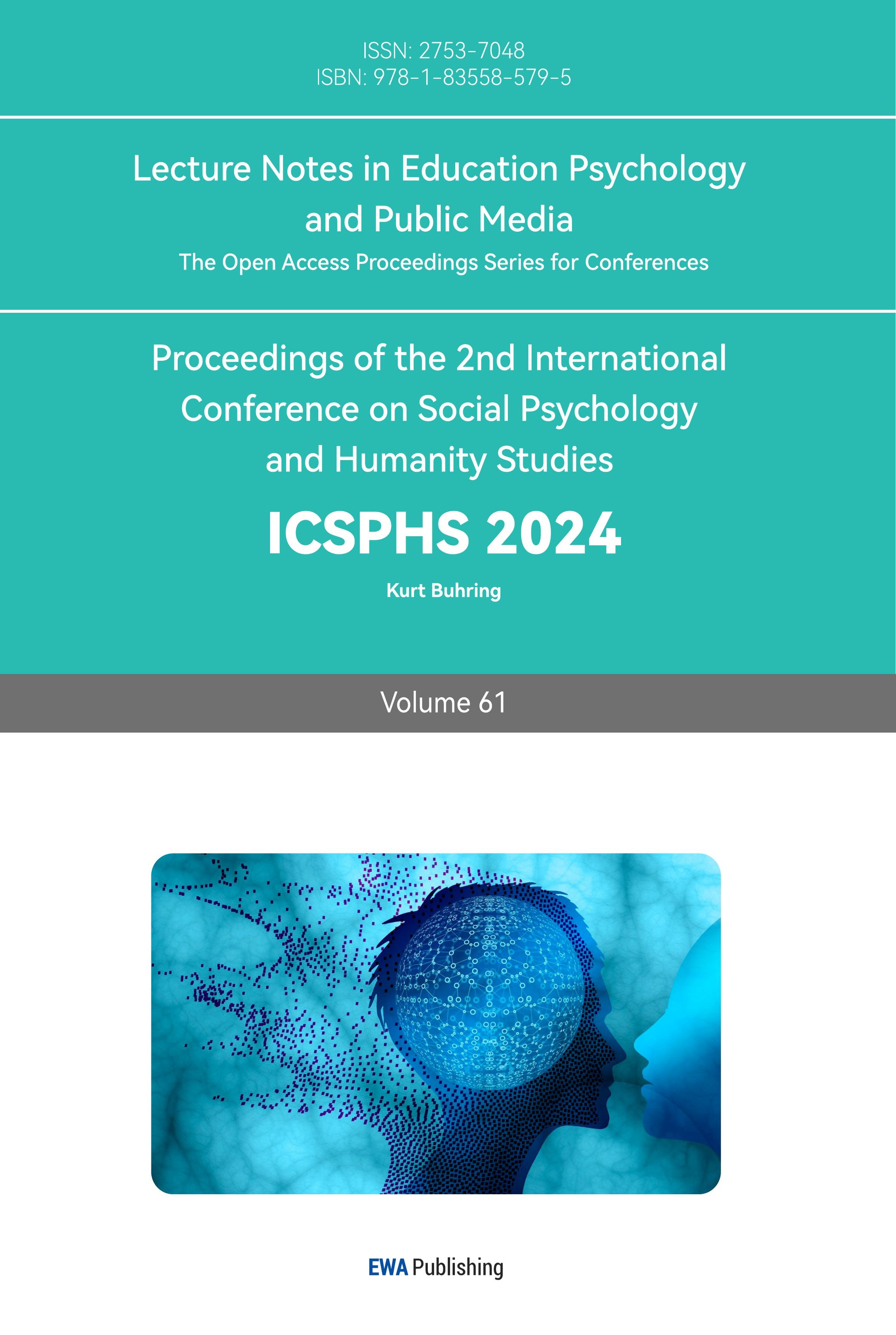1. Introduction
Most people's sexual orientation may be established during adolescence, usually between the ages of 10 and 20. During this period, sexual orientation can be influenced by different aspects, such as genetic factors, hormonal influences and social opinions [1]. In the work, I studied the correlation between mental health and sexual orientation, and also explored the factors that change sexual orientation. I have found that bisexual people are more likely to suffer from mental illness, which is related to social factors, environmental factors and even their own genes. Through detailed investigation, this experiment can make people look at different sexual orientations in a more objective attitude, and help people with different sexual orientations overcome mental illness by researching treatment methods. However, the content about factors of sexual orientation still lacks accuracy, because I cannot find actual cases in real life for in-depth investigation, so there are still some potential factors that cannot be determined, but the preliminary prediction of sexual orientation may still be influenced by childhood experiences.
2. Common sexual orientations & Mental health problems
2.1. Analysis of different sexual orientations and mental illness
There are approximately 64 sexual orientations nowadays in our society, the four most common types are: bisexual (Attraction to more than one gender (both male and female).), heterosexual ((of a person) sexually attracted to people of the opposite sex.), homosexual (Sexually attracted to people of the same sex.), and nonsexuality (Not involving sex or sexual activity a nonsexual relationship nonsexual contact.) [2].
Heterosexual is one of the most common sexual orientations in society, it indicates that heterosexual people are sexually or romantically attracted to people of the opposite sex. [3] In detail, men who are heterosexual are generally attracted to women, and women who are heterosexual are attracted to men;Bisexual means that the person is attracted to more than one gender. Those who identify as bisexual feel a sexual or romantic attraction to people of a different gender as well as their own [3]; Homosexual often demonstrates that a person who is attracted to a person who has the same sex as well. Gay and lesbian are the most common synonyms: If a man is attracted to another man he will be considered as gay, while if a woman is attracted to another woman she will be considered as lesbian [3]; Nonsexuality is less common among the four sexual orientations, it often refers to not involving sex or sexual activity [4].
However, different sexual orientations can lead to different mental health problems, and people with different sexual orientations tend to show different mental health symptoms. According to findings from a Dutch population survey, demonstrate that homosexual people reported more acute mental health symptoms than heterosexual people and their general mental health was also worse [5].
Depression and anxiety are common mental diseases in today's society. As people grow up, they face more and more pressure (such as social pressure, life pressure, economic pressure, emotional pressure, etc.). If they cannot find appropriate ways to relieve it, long-term accumulation will lead to depression and anxiety. Severe depression can even lead to suicide and self-harm.
Depression is typically characterized a lack of interest in anything, continuing to have emotions (such as sadness, anger, emptiness, guilt, or worthlessness), and thoughts of suicide or self-harm [6]. The typical features of Anxiety are repeated negative thoughts, uncontrollable worries, and physical manifestations such as shaking, dizziness, and rapid heartbeat [7].
Although anxiety and depression share a biological basis they are not the same. Anxiety is usually an anxious thought or uncontrollable negative emotion about the future,and the outside world, but depression is often a negative perception of oneself, sometimes thinking of oneself as worthless and useless [8].
In addition, in these four common sexual orientations, bisexuals seem to have more serious psychological problems than homosexuals and heterosexuals, especially anxiety (Anxiety is the mind and body's reaction to stressful, dangerous, or unfamiliar situations.)and depression. The bisexual group and homosexual group were at increased risk of major depression (A mental condition characterized by a persistently depressed mood and long-term loss of pleasure or interest in life, often with other symptoms such as disturbed sleep, feelings of guilt or inadequacy, and suicidal thoughts.); among them, the bisexual group was highest on measures of anxiety [9,10].
2.2. The factors of mental health problems led by bisexuality
Bisexuality as a general sexual orientation is associated with more severe mental illness than homosexuality and heterosexuality.
For bisexual people, their sexual orientation seems to lead to more serious psychological problems. Santhakumar [11] states that mental health problems in the bisexual population are typically due to the stigmatization, oppression, and discrimination that they face. Although some of the research shows that bisexual people are more likely to get mental health problems, it still lacks significant findings about mental health in the biasexual group [11].
For instance, depression is a typical mental problem in the bisexual population. According to Santhakumar [11], three potential factors will lead to depression which are: sexual orientation-based discrimination, bisexual invisibility and erasure, and lack of bisexual-affirmative support. Bisexuality is illegal in some countries, so bisexual people often do not get support from their partners, families, or communities, and even face discrimination [11].
In society, bisexual people can always suffer from some unique discrimination. For example, they are considered unstable in society, and because of some stereotypes, they are often confused about their orientation. They are even considered to be sexually promiscuous (Having or involving many sexual partners.) and people who transmit sexual diseases [12].
In a long-term depressed environment, bisexual people are unable to obtain a sense of identity, and gradually they will have doubts about themselves and suffer from anxiety and even depression. Some bisexuals may develop self-loathing (A pattern of thoughts or feelings of self-hatred and extreme criticism of oneself.) and cause irreversible damage to their bodies. The article written by Fergusson & Horwood [10] illustrates that bisexuals tend to have higher suicide rates.
To conclude, for bisexual people, it seems that most of their mental illness is caused by social discrimination and social disapproval.
2.3. Factors affecting sexual orientation
In the process of changing and establishing sexual orientation, people's perceptions of themselves will also be different, and this process may cause people to produce sexual identity distress (Confusion about one's gender and sexual orientation.)[13]. In fact, sexual orientation will be influenced by genetic, hormonal, and social factors [1].
2.3.1. Genetic Influence
The article written by Dawood & Bailey et al. [14] suggests that in 1986, Pillard and Weinrich conducted a family-genetic study of sexual orientation. In the study, they recruited homosexual and heterosexual male probands (Individual being studied or reported on.)through newspaper advertisements. These probands were interviewed about their sexuality as well as their siblings’ sexual orientations [14]. Results suggested that homosexual probands were quite accurate at assessing their siblings’ sexual orientations [14]. Most importantly, the data showed that the probability that gay male probands had gay brothers was 22 percent; this data was significantly higher than the control group, which is heterosexual male probands (4%) [14].
Furthermore, in Dawood and Bailey’s [14] study, they also found that both male and female homosexuality seems to run in families. The proportion of homosexuality among brothers of homosexual males was around 9%. Compared to the heterosexual control group and the findings from recent large-scale epidemiological surveys, these results are more significant, suggesting that male homosexuality is familial [14]. Homosexual women also appear to have more homosexual sisters [14], this also confirms that sexual orientation can be influenced by genetic factors.
2.3.2. Hormonal Influence
In an article published by Balthazart, J. [15], it was emphasized that heterosexual and homosexual people have significant differences in behavior, physiology, and morphological characteristics. These characteristics are influenced by antenatal steroids (Also known as antenatal corticosteroids, are medications administered to pregnant women expecting a preterm birth.), including testosterone (A steroid hormone that stimulates development of male secondary sexual characteristics, produced mainly in the testes, but also in the ovaries and adrenal cortex.);these differences suggest that homosexual subjects have special endocrine conditions during the development stage [15]. The findings also found that clinical conditions related to significant endocrine changes during embryonic life often cause an increased incidence of homosexuality [15].
To summarize, through the study, people can find that sexual orientation is also influenced by hormones and other biological factors.
2.3.3. Social Influence
From the social aspect, the main factors that affect people's sexual orientation are law, religion, and social norms [16].
For instance, in the United States, the acceptance of homosexuality is increasing, and some laws have begun to protect and legalize same-sex marriage [16], which also makes more and more people dare to face their sexual orientation [16].
However, because different religions have different views on morality, sexual restriction is a common culture in some religions [16], and some sexual orientations are even considered taboo and unacceptable, which also inhibits the development of many sexual orientations and influences people’s sexual orientations [16].
There are also different attitudes around the world; different countries have different levels of openness to sexual orientation and sexual behavior. This will also affect people’s sexual orientation and how they perceive and define their sexuality [16].
All in all, finding out the factors that affect sexual orientation can help people have a correct perspective on different sexual orientations. It can also help people understand their own orientation better. Moreover, to some extent, finding out these factors may help bisexual people or other sexual orientations release the pressure brought by the outside world as well.
3. Treatments
3.1. Treatment for homosexual or bisexual depression
With an increasing number of homosexual and bisexual people suffering from depression and anxiety, it is important to help them find some valid methods for treatment and relief.
Homosexual and bisexual people can determine whether they have depression and what level of depression they have by knowing the symptoms of depression. People with depression often do not feel happy; their weight can change as their sleeping and eating patterns change; they have difficulty concentrating; and they are often not interested in what is going on around them [17]. People with severe depression will even repeatedly think about death and suicide [17].
Natasha Tracy [17] once interviewed a homosexual person and found that the reason why most homosexual people suffer from depression is not because people are afraid of homosexuality but because they can't get a sense of identity in their own society and community. They think that they are trapped in a family and society that does not accept homosexuality, and they can't be their true selves in such an environment [17].
As mentioned in Natasha Tracy's article, depression patients can get treatment by consulting doctors [17]. Many places have set up some homosexual or bisexual medical groups or associations [17]. They can take some drugs or receive psychological counseling to relieve the depressed emotions caused by depression [17]. Patients can also take some medications for depression, such as antidepressants (A class of medications used to treat major depressive disorder, anxiety disorders, chronic pain, and addiction.) similar to SSRI (A type of antidepressant drug that inhibits the reabsorption of serotonin by neurons, so increasing the availability of serotonin as a neurotransmitter.),which can be effective in helping patients with depression [18].
4. Survey
4.1. The formation of sexual orientation and the perception of sexual orientation
I made a brief survey report, to investigate the views of people around them on sexual orientation, and how they recognize and form their sexual orientation. A total of 33 people participated in my online survey, and they provided me with a lot of useful data.
4.1.1. Survey data analysis
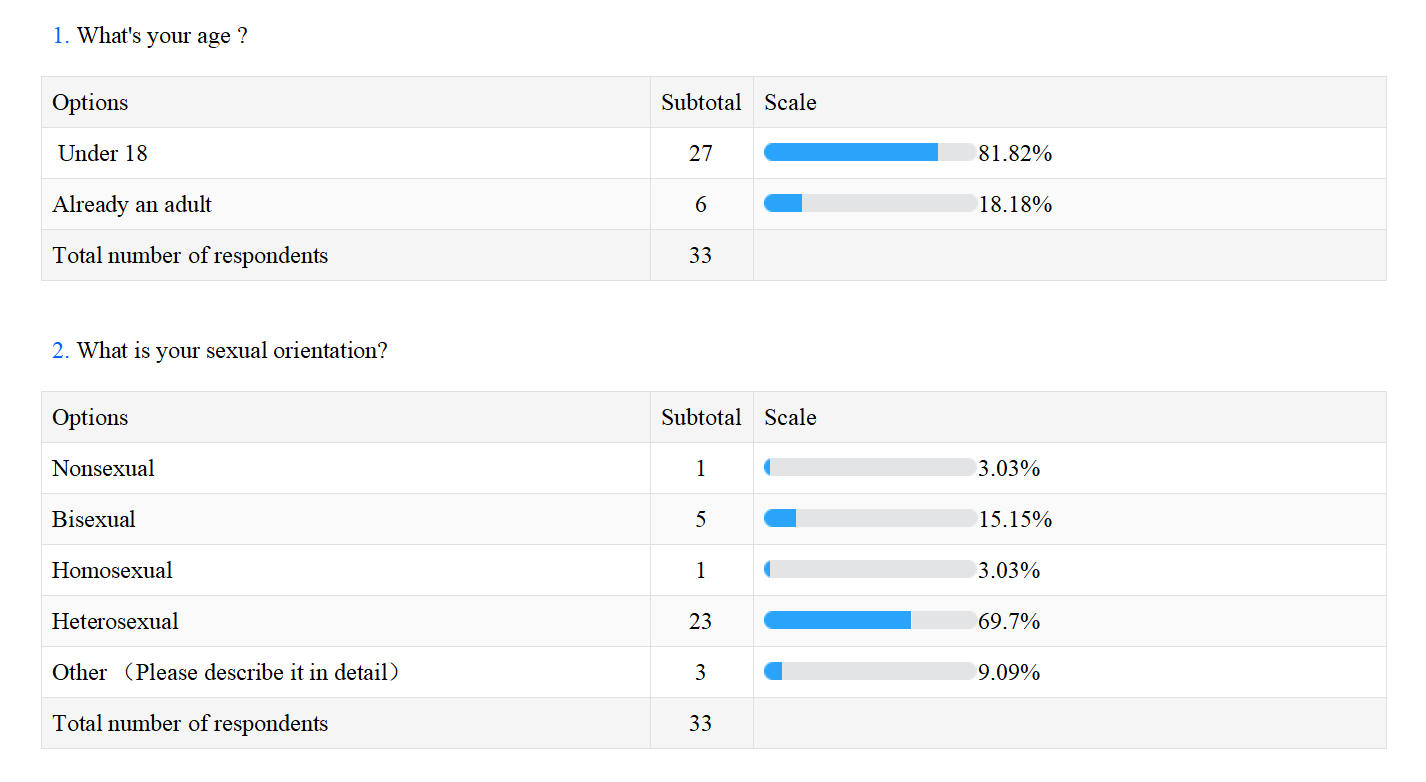
Figure 1: Sexual orientation and age
Figure 1 shows that Eighty-one percent of the respondents were teenagers, and only six were adults, so the target of the survey was mainly teenagers. As for the survey of sexual orientation, I found that heterosexual people are the most, which is not surprising to me, after all, heterosexuality is still dominant in today's society. But 15 percent of people still identify themselves as bisexual, they believe that they can be attracted to both men and women. Surveys show that most people have a clear understanding of their sexual orientation.
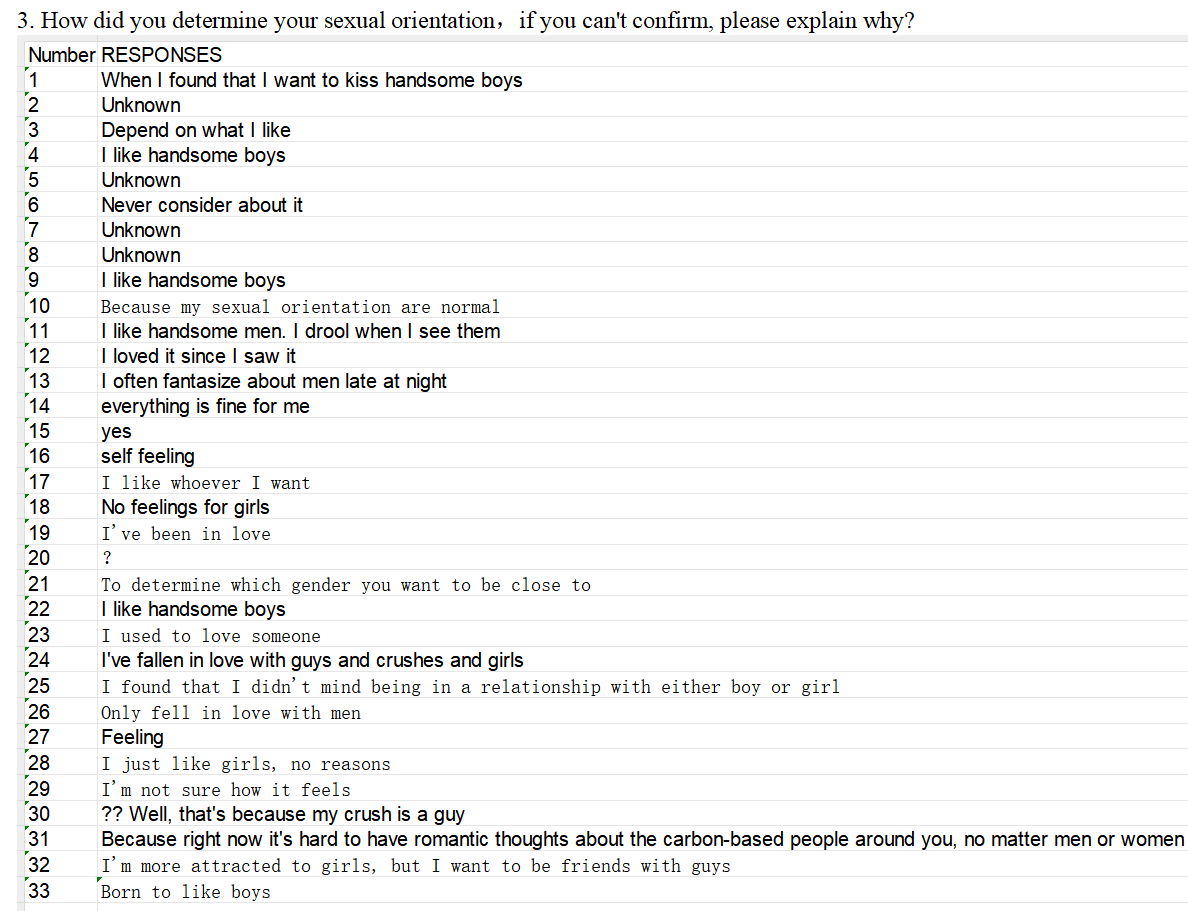
Figure 2: Ways of sexual orientation determination
From Figure 2, it suggests that many people identify their sexual orientation by being attracted to people who have the opposite sex. Most people say that because they are often attracted to the people who have a beautiful or handsome appearance, therefore they identify themselves as heterosexual. However, some people say they identify their sexual orientation based on feelings. The survey found that most people judge their sexual orientation by their feelings for others, or by changes in their hearts.
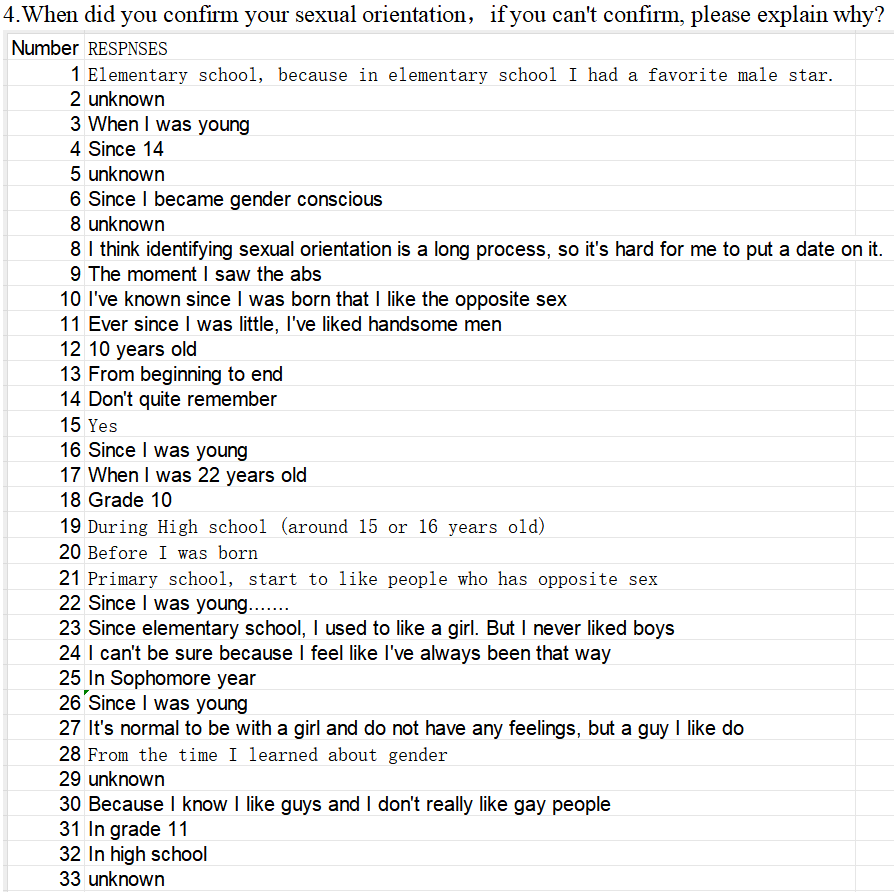
Figure 3: Date of sexual orientation determination
According to Figure 3, Most of the teens who participated in this survey identified their sexual orientation when they first fell in love with someone. Most people identify their sexual orientation in elementary or middle school (between 10 years old and 14 years old). And there are some people who identified their sexual orientation through the cognition of gender, as well as the concept of society to understand sexual orientation. In fact, in the process of collecting survey data, I found that some people did not have a correct understanding of their sexual orientation, but because of the pressure of parents or society, they had a wrong understanding of their sexual orientation.

Figure 4: Opinions toward sexual orientation
Figure 4 demonstrates that most teenagers do not have negative thoughts about people with different sexual orientations than themselves, and they respect them. However, some people directly express their dissatisfaction with certain sexual orientations, such as homosexuality, when answering this question. In such a heterosexual world, it seems that other sexual orientations are sometimes considered different or discriminated against, but fortunately, most people will maintain a respectful attitude towards these people even if they do not understand these sexual orientations (such as gay, bisexual, etc.).
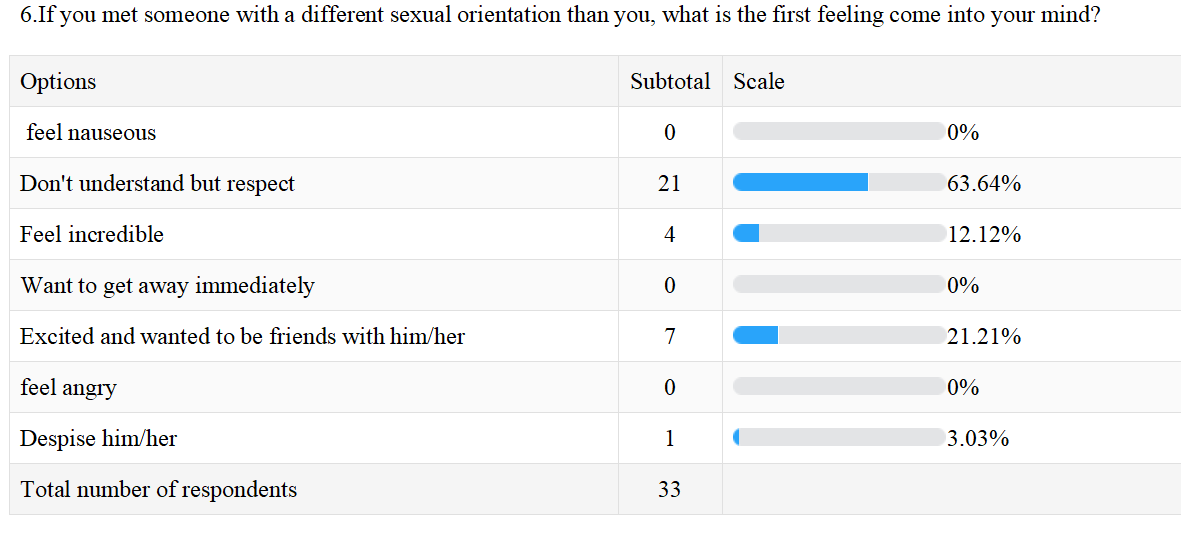
Figure 5: Feelings toward specific scene
From Figure 5, The data shows that when meeting people with different sexual orientations from their own, more than 60% of the participants expressed a respectful attitude. They may not recognize or understand these sexual orientations from their hearts, but they will try to communicate with these people and get along peacefully and be friendly with these people, rather than discriminate or treat them differently. However, some people will be curious or even excited about these people with different sexual orientations, they will want to try to make friends with them, from their perspectives getting along with a variety of people can bring different experiences. In addition, 10 percent of participants would be shocked to see someone of a different sexual orientation than themselves.
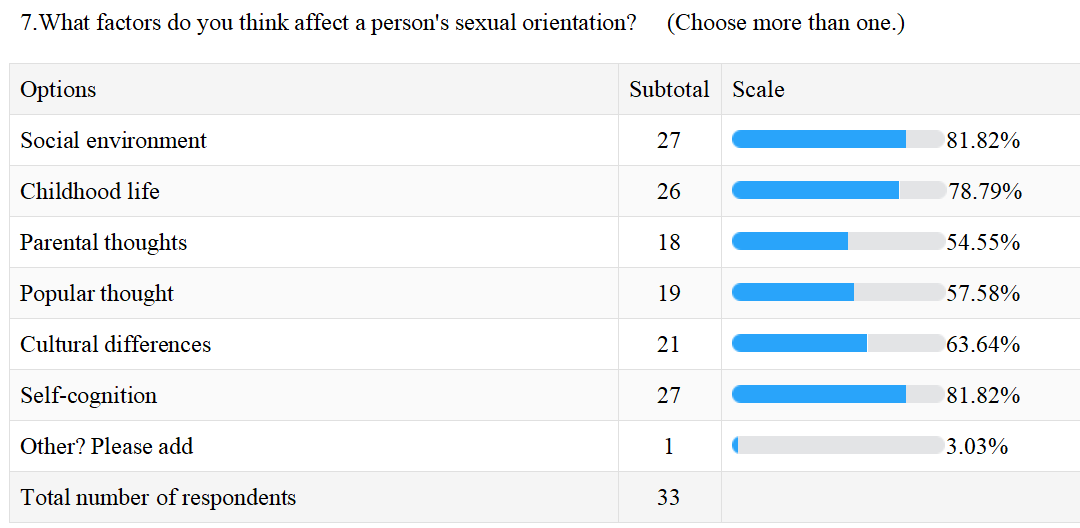
Figure 6: Factors that led to sexual orientation
There are many factors that affect a person's sexual orientation, figure 6 shows that the three most recognized factors are social environment, childhood life, and self-cognition, which account for more than 80 percent. The social environment includes the social rules and the general cognition of the public. In this society, most people think that heterosexuality is the most extensive and normal sexual orientation, therefore many people will form the cognition that heterosexuality is the correct sexual orientation, which will influence their sexual orientation. Childhood life also plays an important role in impacting people’s sexual orientation, some childhood experiences, as well as early parenting, can subtly help us form or influence our sexual orientation. Self-cognition is also one of the factors which affect sexual orientation, through the understanding of their gender and identity, teenagers can have a basic understanding of their sexual orientation. With the change of identity and the change of self-cognition,the sexual orientation will also change.

Figure 7: Perspectives toward sexual orientation’s development
In Figure 7 it illustrates that most young people believe that today's increasingly diverse social orientations do not have a significant impact on their lives hence they do not care about it. About 33 percent of participants said that the diversity of sexual orientation did not cause serious negative consequences, and they think that the growing diversity of sexual orientation was not too bad for society.
4.1.2. Mistakes in the survey
During the process of data collection in the survey report, I received a lot of feedback, and many people thought that when I asked them about their views on people with different sexual orientations, I needed to add another option which is called understand and respect. They believe that in many cases, even if they meet people with different sexual orientations, they will not feel surprised or do not understand, on the contrary, they understand others’ sexual orientations and respect them. This also let me know that, in the face of a relatively sensitive topic such as sexual orientation, most teenagers will hold goodwill and try to be inclusive and kind.
4.1.3. Reflection
According to this survey, it demonstrates that more and more young people in today's society are trying to accept a variety of sexual orientations. More and more people begin to pay attention to their own will, rather than the others’ opinions and perspectives, and of course, the tolerance of society is also increasing. Although the data shown by the survey is very optimistic, it is undeniable that heterosexuality is still considered to be the mainstream in today's society, and homosexual and bisexual people also suffer from mental illness due to various social factors.
5. Conclusion
This article discussed different sexual orientations and their relationship with psychological disorders such as depression and anxiety. It is clear that, the probability of homosexual and bisexual people suffering from depression is significant and common in people's lives.
With the development of society, people have more and more choices, and sexual orientations have also become diversified. Although society become more and more inclusive, homosexual and bisexual people still suffer from discrimination and mental health problems.
Therefore, the mental illness caused by sexual orientation needs more attention in today's society.
References
[1]. Edubirdie (2021, October 29), Factors Influencing Sexual Orientation Of MenAnd Women- Edubirdie.https://edubirdie.com/examples/factors-influencing-sexual-orientation-of-men-and-women/#:~:text=Factors%20Influencing%20Sexual%20Orientation%20Of%20Men%20And%20Women,. . .%203%20Social%20Influence%20. . .%204%20Conclusion%20
[2]. Xing Xing. (n.d.). There are 64 different sexual orientations than you know, Yinchuan mental health association. https://mp.weixin.qq.com/s?__biz=MzI0MDA2MDEwOQ==&mid=2655045998&idx=1&sn=2d077a18d2d12b47be84953550282e74&chksm=f294faccc5e373da15a1bc44825c633e7b80549670e573f908b56a7175fe847cfbf5d9ba89ef&scene=27
[3]. WebMD Editorial Contributors. (2020a, December 2). What is bisexual? WebMD. https://www.webmd.com/sex/what-is-bisexualWebMD Editorial Contributors. (2020b, December 17). What is heterosexuality? WebMD. WebMD Editorial Contributors. (2020d, December 18). What is homosexuality? WebMD. https://www.webmd.com/sex/what-is-homosexuality
[4]. Definition of nonsexual. (n.d.). In Merriam-Webster Dictionary. https://www.merriam-webster.com/dictionary/nonsexual
[5]. Sandfort, T. G., Bakker, F., Schellevis, F. G., & Vanwesenbeeck, I. (2006). Sexual orientation and mental and physical health status: findings from a Dutch population survey. American journal of public health, 96(6), 1119-1125.
[6]. Depression. (n.d.). National Institute of Mental Health (NIMH). https://www.nimh.nih.gov/health/topics/depression#:~:text=If%20you%20have%20been%20experiencing%20some%20of%20the,7%20Difficulty%20concentrating%2C%20remembering%2C%20or%20making%20decisions%20%E6%9B%B4%E5%A4%9A%E9%A1%B9%E7%9B%AE
[7]. Anxiety. (n.d.). https://www.apa.org. https://www.apa.org/topics/anxiety/#:~:text=Anxiety%20is%20characterized%20by%20feelings%20of%20tension%2C%20worried,as%20sweating%2C%20trembling%2C%20dizziness%20or%20a%20rapid%20heartbeat.
[8]. Glasofer, D. R., PhD. (2022). Anxiety vs. Depression Symptoms and Treatment. Verywell Mind. https://www.verywellmind.com/am-i-anxious-4045683https://m.youlai.cn/jingbian/article/39ddf4muua0.htmlhttps://www.webmd.com/sex/what-is-heterosexual#:~:text=Heterosexual%20people%20are%20sexually%20or%20romantically%20attracted%20to,women%20are%20sexually%20or%20romantically%20attracted%20to%20men.
[9]. Jorm, A. F., Korten, A. E., Rodgers, B., Jacomb, P. A., & Christensen, H. (2002). Sexual orientation and mental health: results from a community survey of young and middle–aged adults. The British Journal of Psychiatry, 180(5), 423-427.
[10]. Fergusson, D. M., Horwood, L. J., & Beautrais, A. L. (1999). Is sexual orientation related to mental health problems and suicidality in young people?. Archives of general psychiatry, 56(10), 876-880.
[11]. Santhakumar, S. (2021, June 1). What to know about mental health among bisexual individuals. https://www.medicalnewstoday.com/articles/bisexuality-mental-health
[12]. Lawson, K. (2017, September 22). The Unique Discrimination that Bi People Face. VICE. https://www.vice.com/en/article/pakkkm/the-unique-discrimination-that-bi-people-face
[13]. Lawson, K. (2017, September 22). The Unique Discrimination that Bi People Face. VICE. https://www.vice.com/en/article/pakkkm/the-unique-discrimination-that-bi-people-face
[14]. Dawood, K., Bailey, J. M., & Martin, N. G. (2009). Genetic and environmental influences on sexual orientation. In Springer eBooks (pp. 269–279). https://doi.org/10.1007/978-0-387-76727-7_19
[15]. Balthazart, J. (2011). Minireview: Hormones and Human Sexual Orientation. Endocrinology, 152(8), 2937–2947. https://doi.org/10.1210/en.2011-0277
[16]. Worthy, L. D. (2020, July 27). Sexuality and culture. Pressbooks. https://open.maricopa.edu/culturepsychology/chapter/sexuality-and-culture/#
[17]. Natasha Tracy (2022, January 10). Homosexuals and Depression: Help for Gays with Depression | HealthyPlace. https://www.healthyplace.com/gender/glbt-mental-health/homosexuals-and-depression-help-for-gays-with-depression#
[18]. Coryell W. (2023, May 22). Medication for depression. 《MSD Handbook for General Use》. https://www.msdmanuals.cn/home/mental-health-disorders/mood-disorders/drug-treatment-for-depression
Cite this article
Liu,X. (2024). The Association Between Mental Health and Different Sexual Orientations. Lecture Notes in Education Psychology and Public Media,61,114-123.
Data availability
The datasets used and/or analyzed during the current study will be available from the authors upon reasonable request.
Disclaimer/Publisher's Note
The statements, opinions and data contained in all publications are solely those of the individual author(s) and contributor(s) and not of EWA Publishing and/or the editor(s). EWA Publishing and/or the editor(s) disclaim responsibility for any injury to people or property resulting from any ideas, methods, instructions or products referred to in the content.
About volume
Volume title: Proceedings of the 2nd International Conference on Social Psychology and Humanity Studies
© 2024 by the author(s). Licensee EWA Publishing, Oxford, UK. This article is an open access article distributed under the terms and
conditions of the Creative Commons Attribution (CC BY) license. Authors who
publish this series agree to the following terms:
1. Authors retain copyright and grant the series right of first publication with the work simultaneously licensed under a Creative Commons
Attribution License that allows others to share the work with an acknowledgment of the work's authorship and initial publication in this
series.
2. Authors are able to enter into separate, additional contractual arrangements for the non-exclusive distribution of the series's published
version of the work (e.g., post it to an institutional repository or publish it in a book), with an acknowledgment of its initial
publication in this series.
3. Authors are permitted and encouraged to post their work online (e.g., in institutional repositories or on their website) prior to and
during the submission process, as it can lead to productive exchanges, as well as earlier and greater citation of published work (See
Open access policy for details).
References
[1]. Edubirdie (2021, October 29), Factors Influencing Sexual Orientation Of MenAnd Women- Edubirdie.https://edubirdie.com/examples/factors-influencing-sexual-orientation-of-men-and-women/#:~:text=Factors%20Influencing%20Sexual%20Orientation%20Of%20Men%20And%20Women,. . .%203%20Social%20Influence%20. . .%204%20Conclusion%20
[2]. Xing Xing. (n.d.). There are 64 different sexual orientations than you know, Yinchuan mental health association. https://mp.weixin.qq.com/s?__biz=MzI0MDA2MDEwOQ==&mid=2655045998&idx=1&sn=2d077a18d2d12b47be84953550282e74&chksm=f294faccc5e373da15a1bc44825c633e7b80549670e573f908b56a7175fe847cfbf5d9ba89ef&scene=27
[3]. WebMD Editorial Contributors. (2020a, December 2). What is bisexual? WebMD. https://www.webmd.com/sex/what-is-bisexualWebMD Editorial Contributors. (2020b, December 17). What is heterosexuality? WebMD. WebMD Editorial Contributors. (2020d, December 18). What is homosexuality? WebMD. https://www.webmd.com/sex/what-is-homosexuality
[4]. Definition of nonsexual. (n.d.). In Merriam-Webster Dictionary. https://www.merriam-webster.com/dictionary/nonsexual
[5]. Sandfort, T. G., Bakker, F., Schellevis, F. G., & Vanwesenbeeck, I. (2006). Sexual orientation and mental and physical health status: findings from a Dutch population survey. American journal of public health, 96(6), 1119-1125.
[6]. Depression. (n.d.). National Institute of Mental Health (NIMH). https://www.nimh.nih.gov/health/topics/depression#:~:text=If%20you%20have%20been%20experiencing%20some%20of%20the,7%20Difficulty%20concentrating%2C%20remembering%2C%20or%20making%20decisions%20%E6%9B%B4%E5%A4%9A%E9%A1%B9%E7%9B%AE
[7]. Anxiety. (n.d.). https://www.apa.org. https://www.apa.org/topics/anxiety/#:~:text=Anxiety%20is%20characterized%20by%20feelings%20of%20tension%2C%20worried,as%20sweating%2C%20trembling%2C%20dizziness%20or%20a%20rapid%20heartbeat.
[8]. Glasofer, D. R., PhD. (2022). Anxiety vs. Depression Symptoms and Treatment. Verywell Mind. https://www.verywellmind.com/am-i-anxious-4045683https://m.youlai.cn/jingbian/article/39ddf4muua0.htmlhttps://www.webmd.com/sex/what-is-heterosexual#:~:text=Heterosexual%20people%20are%20sexually%20or%20romantically%20attracted%20to,women%20are%20sexually%20or%20romantically%20attracted%20to%20men.
[9]. Jorm, A. F., Korten, A. E., Rodgers, B., Jacomb, P. A., & Christensen, H. (2002). Sexual orientation and mental health: results from a community survey of young and middle–aged adults. The British Journal of Psychiatry, 180(5), 423-427.
[10]. Fergusson, D. M., Horwood, L. J., & Beautrais, A. L. (1999). Is sexual orientation related to mental health problems and suicidality in young people?. Archives of general psychiatry, 56(10), 876-880.
[11]. Santhakumar, S. (2021, June 1). What to know about mental health among bisexual individuals. https://www.medicalnewstoday.com/articles/bisexuality-mental-health
[12]. Lawson, K. (2017, September 22). The Unique Discrimination that Bi People Face. VICE. https://www.vice.com/en/article/pakkkm/the-unique-discrimination-that-bi-people-face
[13]. Lawson, K. (2017, September 22). The Unique Discrimination that Bi People Face. VICE. https://www.vice.com/en/article/pakkkm/the-unique-discrimination-that-bi-people-face
[14]. Dawood, K., Bailey, J. M., & Martin, N. G. (2009). Genetic and environmental influences on sexual orientation. In Springer eBooks (pp. 269–279). https://doi.org/10.1007/978-0-387-76727-7_19
[15]. Balthazart, J. (2011). Minireview: Hormones and Human Sexual Orientation. Endocrinology, 152(8), 2937–2947. https://doi.org/10.1210/en.2011-0277
[16]. Worthy, L. D. (2020, July 27). Sexuality and culture. Pressbooks. https://open.maricopa.edu/culturepsychology/chapter/sexuality-and-culture/#
[17]. Natasha Tracy (2022, January 10). Homosexuals and Depression: Help for Gays with Depression | HealthyPlace. https://www.healthyplace.com/gender/glbt-mental-health/homosexuals-and-depression-help-for-gays-with-depression#
[18]. Coryell W. (2023, May 22). Medication for depression. 《MSD Handbook for General Use》. https://www.msdmanuals.cn/home/mental-health-disorders/mood-disorders/drug-treatment-for-depression





